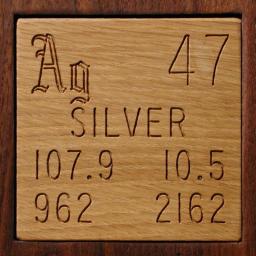  Coin from 98-99BC. Coin from 98-99BC.
This is a smallish coin that I thought was going to make a better photograph than the tetradrachm listed above. In fact it didn't, but it's still a very nice example of an ancient coin. Within a few weeks of posting this entry with a note that I didn't know much about the coin, reader Peter Marren helpfully supplied the following learned (and fascinating) analysis of the coin and why it was expensive.The coin is a denarius (silver penny) of Emperor Trajan, who reigned from AD 98 to 118. You can tell roughly when the coin was minted from the letters COS II on the reverse, meaning second consulship, which places it near the beginning of Trajan's rule. By contrast with many later coins, not to mention the warlike scenes on Trajan's Column in Rome, this coin has a nice peaceful message. The emperor is styled IMP.CAES.NERVAE. TRAIAN.AUG.GERM.P.M., that is Imperator Nerva Trajanus Caesar Augustus Germanicus Pontifex Maximus (there being no J in Latin). On some later coins he is also styled OPTIMUS PRINCEPS or 'best ruler' (literally 'best first man'). This seems to have been no empty honor. Trajan had a colossal reputation in his own lifetime and was remembered afterwards as the model of everything a Roman emperor should be. 'May you be as wise as Augustus and as successful as Trajan' was the saying. Even the Christians admired him. Dante reworked an old tradition that Trajan was secretly baptized on his deathbed by placing him in Paradise while other pagans, good or bad, were stuck in Hell. That chunky coin portrait of him is instantly recognizable, and compares well with Trajan's portrait busts. He was the last clean-shaven emperor for a long time.
Anyway, the reverse of the coin shows the Goddess Vesta seated facing left and holding out a patera or offering dish. Vesta was the deity of hearth and home, of family life. Suitably, the inscription emphasizes the emperor's title of Pontifex Maximus or chief priest, and also his role as tribune (Tribunicia Potestas - tribunicial power), that is, as the people's representative . The full inscription reads PONT.MAX.TR.POT.COS. II. Or Pontifex Maximus Tribunicia Potestas Consul II . Vesta looks a bit like Britannia on the old English pennies, and probably conveyed the same sort of reassuring message. She looked after both the emperor's family and the extended family of the Roman Empire in which people then identified to an extent we modern Europeans can scarcely empathize with now. So its a nice little piece of history from the pinnacle of Roman pride and confidence. It should weigh roughly 2.9 grams.
That's why this coin cost you a hundred bucks. As a general rule coins of the successful emperors are scarcer than the unsuccessful ones. In times of uncertainty coins were buried, maybe their owner was killed and the coins left to be dug up by archaeologists armed with metal detectors nearly two thousand years later. Trajan's coins on the other hand were traded, spent and eventually melted down. That's why you can find coins of forgotten emperors like Maximinus or Gallus for the price of a bus ticket, but have to pay serious money for one of Julius Caesar or Augustus.
Where did the silver come from? An expert could probably identify the mint, but I think the biggest Roman silver mines were in what is now Spain. A lot of them were worked out in ancient times, and you can still detect the atmospheric metal pollution in two-thousand year-old ice deep in the Greenland ice-cap. But its just possible that your coin might have come from silver mines in Cornwall here in dear old Britannia. By the by, I think 95 percent silver is a bit optimistic. If you analyzed it I suspect you'd find a lot of copper. I have lowered my estimate to 90% based on Peter's skepticism.
Source: Specialty Stamp & Coin
Contributor: Theodore Gray
Acquired: 13 February, 2006
Text Updated: 29 January, 2009
Price: $100
Size: 0.5"
Purity: >90%
Sample Group: Coins
|
| 
|
|